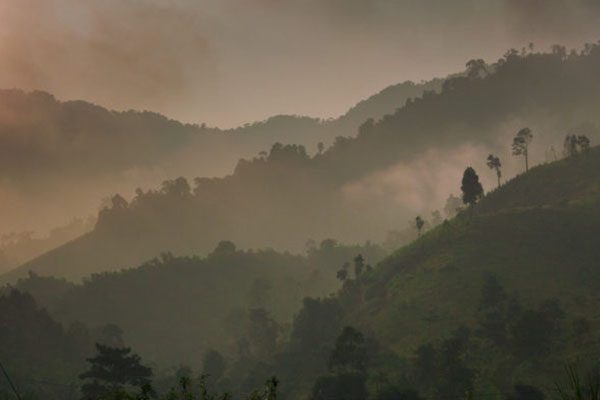
Putting Monetary Value on Kenyan Forests to Encourage Conservation

If you’re talking about water, you’re talking about trees.
The value of Kenya’s high-elevation forests extends beyond their great beauty and geological diversity. The country depends on five major forest watersheds or “water towers” – Aberdares, Cherangani Hills, Mau Complex, Mt. Elgon and Mt. Kenya – for most of her water, energy and habitat that harbors rare and exotic species of plants and animals.
“People do not value natural resources and that has led to degradation of the water towers,” said David Langat, a Senior Research Officer at the Kenya Forestry Research Institute (KEFRI).
Langat is referring to the exploitation of the forests by people and businesses who are chopping down trees for economic and industrial use. Add this to fluctuating weather patterns that are disrupting the forests’ ability to capture and provide water, and a water crisis in Kenya is becoming increasingly imminent.
This threat has brought renowned scientists from KEFRI and the United States Forest Service (USFS) together under the USAID Resilient Water Towers project to determine the economic value of Kenyan’s water towers.
“The economic valuation will establish the significance of the ecosystem and how it’s important to the economic growth of Kenya, as well as the benefits of conservation and what steps need to be taken towards rehabilitation and conservation,” Langat explained.
The team has been collecting data in the Cherangani Hill, Mt. Elgon, and the Mau Complex water towers. They interviewed families and various stakeholders such as local water services providers.
“The data will help us understand how the forests and other natural resources are being used. The information will be shared with resource managers, policy makers as well the Kenya National Treasury so they can put more resources towards conservation of the water towers,” Langat said.
Together with Intergovernmental Authority on Development Climate Prediction and Applications Centre, they have assessed how the three water towers may be affected by warmer temperatures and unpredictable rainfall.
“USAID is committed to supporting sustainable approaches targeted towards the protection of the ecosystem,” USFS Ecologist and Ecosystem Service Specialist Nikola Smith said.
The Ministry of Environment and Natural Resources and other partners are expected to use this information to design a 20-year strategy that will enhance the ability of these communities and ecosystems to withstand and recover from such shocks and stresses.
Considering these forests are sought after by tourists who want to observe elephants and other wildlife, their management has been a subject of intense national debate for years, with several competing interests at play.
The water towers provide critical ecological services to the country in terms of water storage, river flow regulation, flood mitigation, recharge of groundwater, reduced soil erosion and siltation, water purification, conservation of biodiversity and micro‐climate regulation. Through these ecological services, the water towers support key economic sectors in Kenya, including energy, tourism, agriculture and industry.
In addition, the water towers are the source of water supply to several urban centers and support the livelihoods of millions of people living in the rural areas. They are home of a minority group of indigenous forest dwellers, the Ogiek and Sengwer, and provide livelihood support for many communities who live in the areas immediately surrounding the water towers. Rivers draining from the water towers flow into Lake Victoria which is one source of the River Nile. The water towers secure ecological balances of regional importance, including the extensive Mara and Serengeti wildlife sanctuaries – a crucial trans‐boundary heritage of both Kenya and Tanzania.
“We have private companies that process the trees for various outputs, tea plantations, illegal loggers and human settlements and all these degrade the water towers, and that is why it’s important to develop a strategy,” said KEFRI Deputy Director Joshua Cheboiwo.
Communities living in these densely forested hillsides are important allies in protecting the water towers. Unfortunately, many still do not understand the value of protecting them.
“We decided to use a community-based approach, whereby we sensitize and educate communities on data collection and research so that they can be direct protectors of their environment,” Cheboiwo said.
The approach is working. In some areas, community members are monitoring water levels and water quality using equipment provided by the USAID project.
“We want people to appreciate that the use of forests has a direct linkage to what they consume in terms of water and food,” Langat concluded.
The information the community generates will be critical to reporting the status of the water towers to Kenya’s parliament, changing attitudes of decision makers so that they can attach a higher value to the water towers to enable or generate support for improved management.
This post originally appeared on USAID Transforming Lives.
Related Projects

